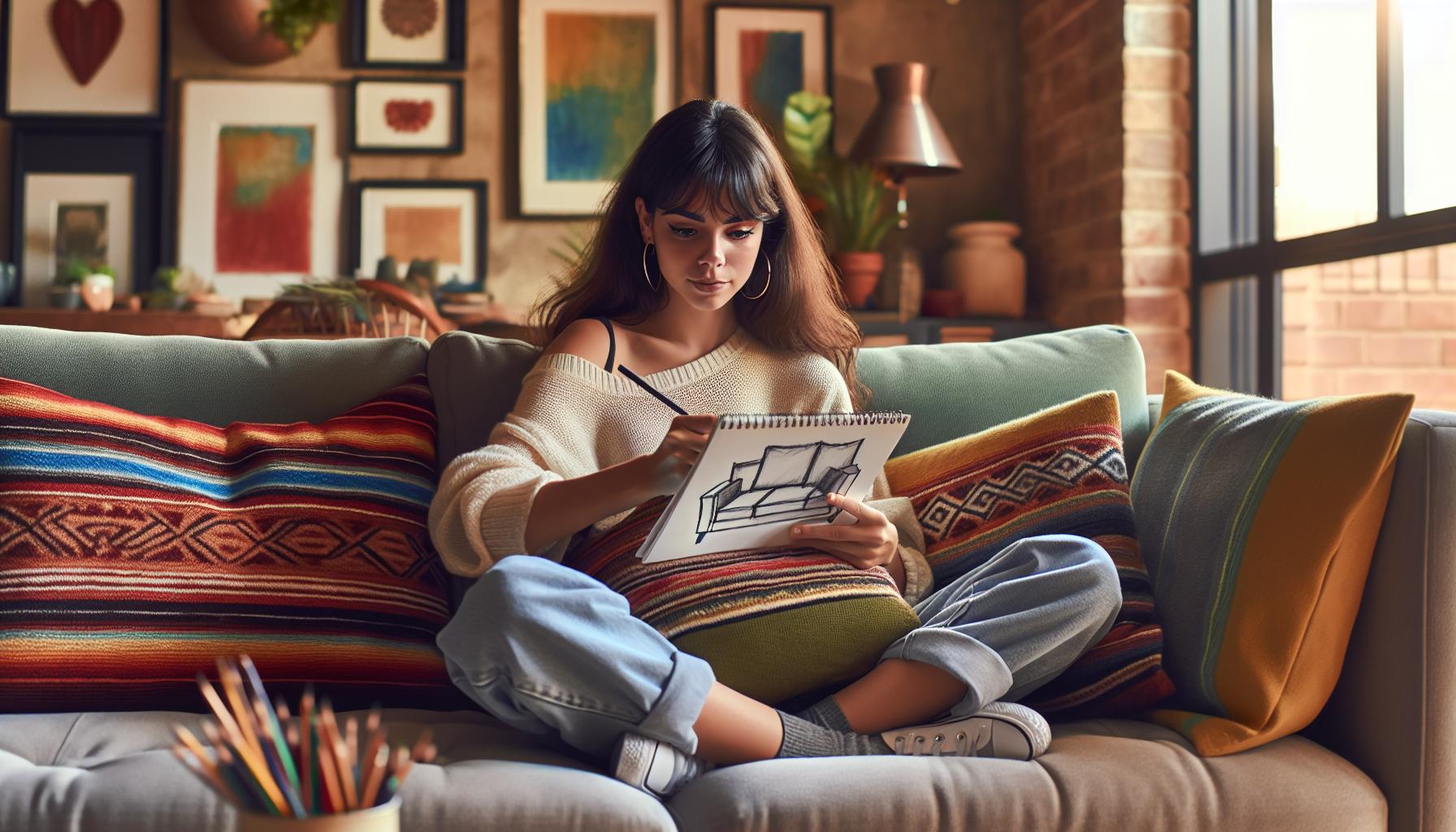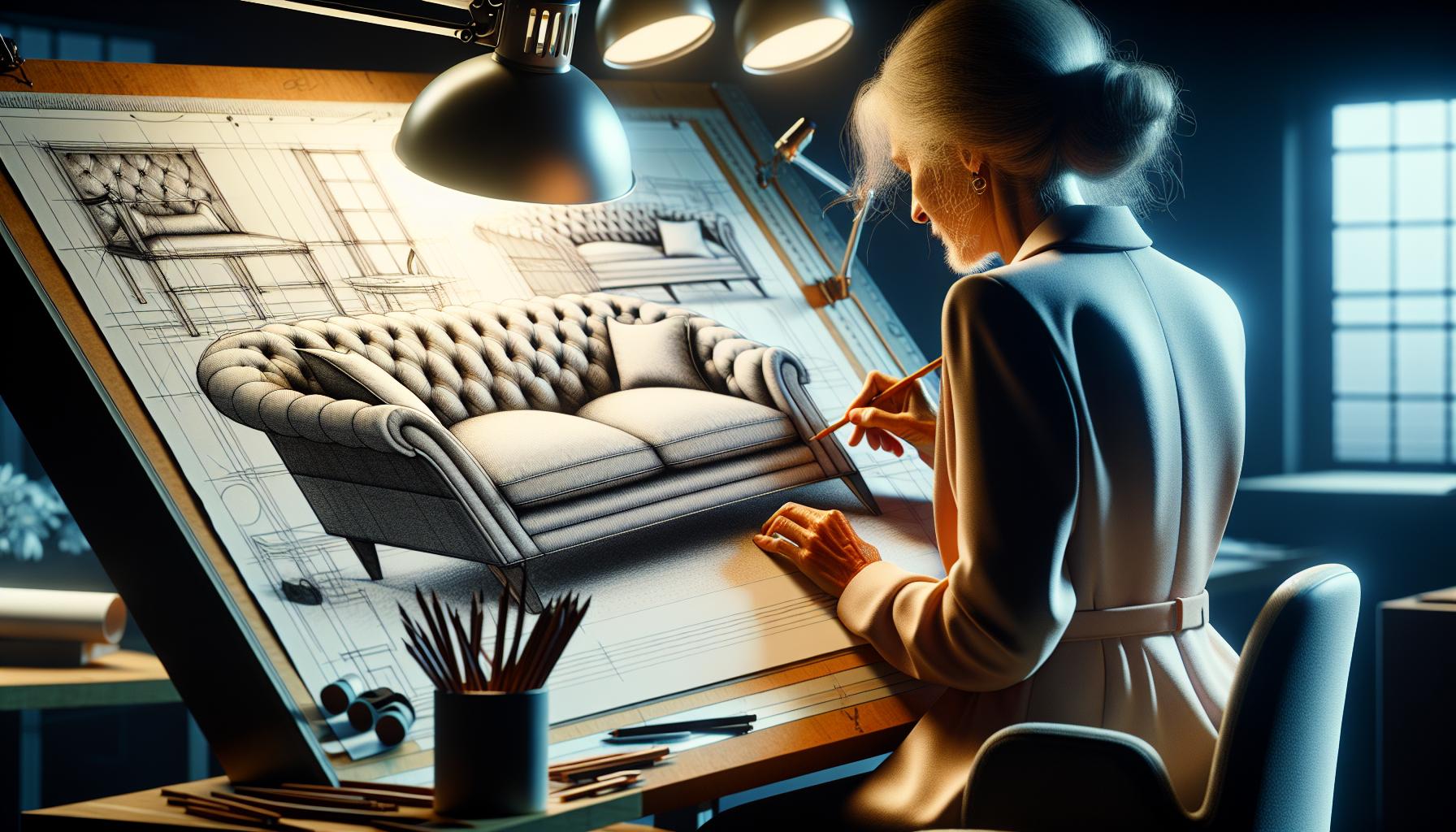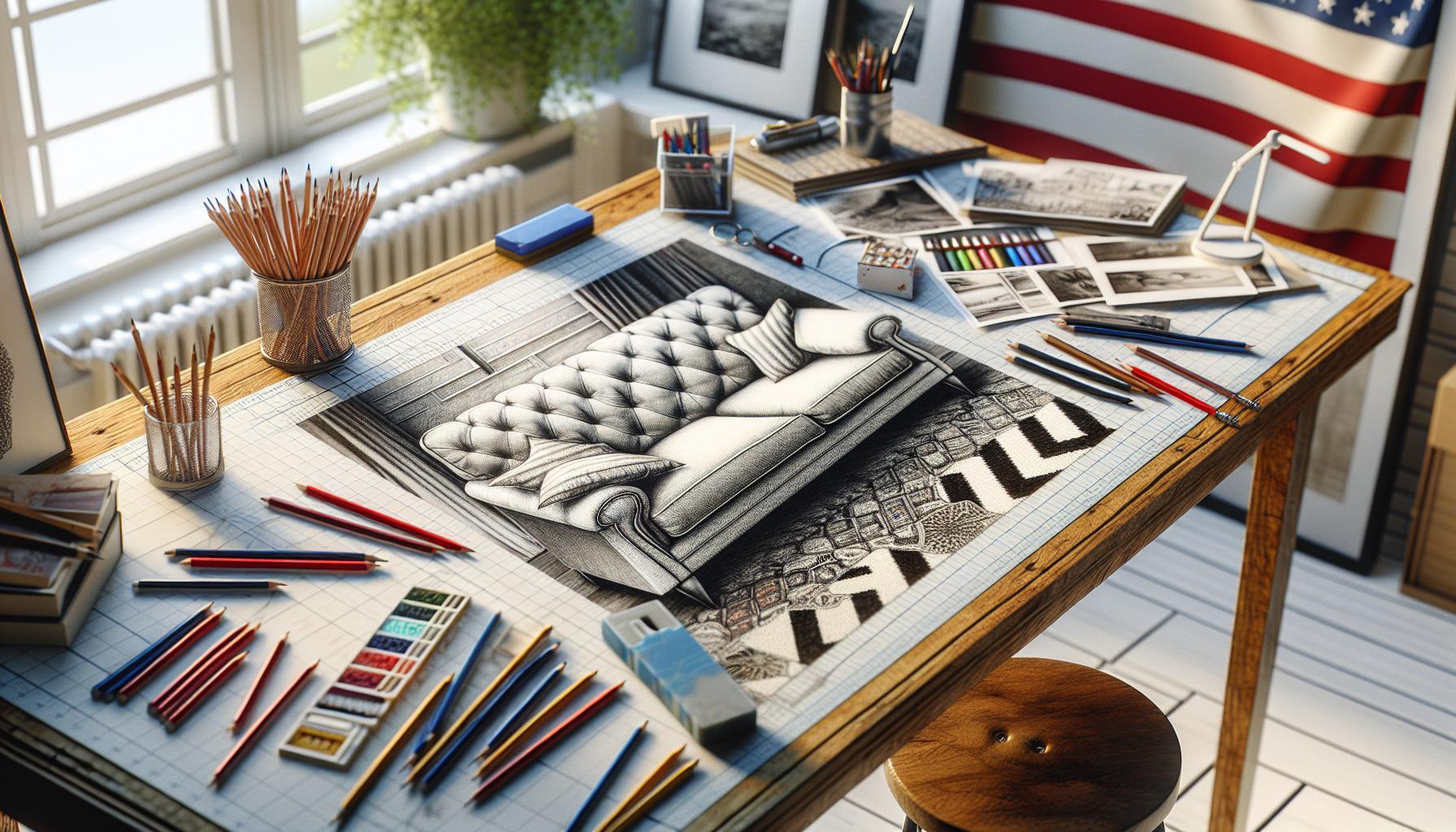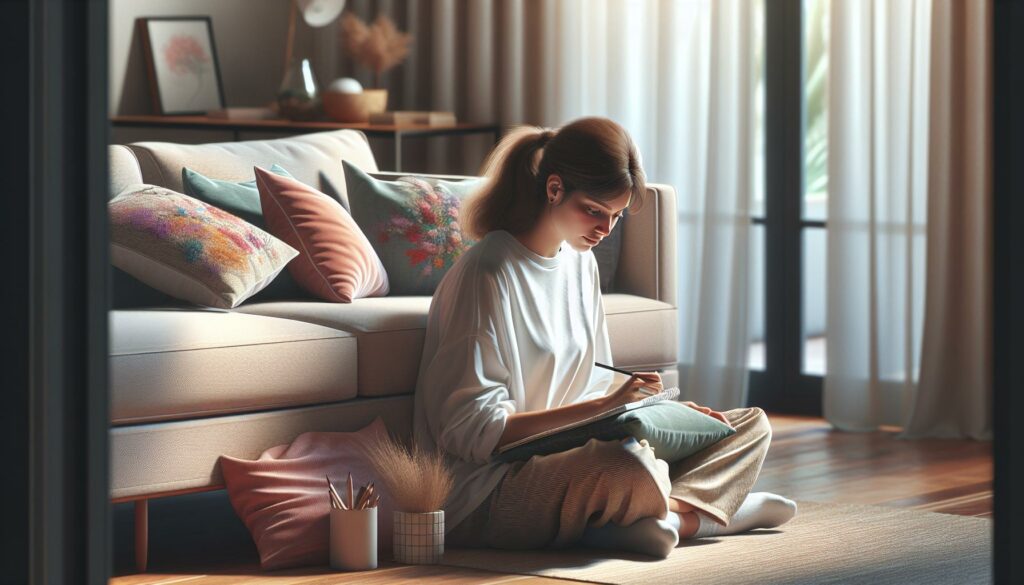Drawing can seem daunting, but it doesn’t have to be. When it comes to easy couch drawing, I’ve found that breaking it down into simple steps makes the process enjoyable and accessible for everyone. Whether you’re a beginner or just looking to refine your skills, creating a cozy couch scene can be a fun way to express your creativity.
Key Takeaways
- Simplified Approach: Easy couch drawing breaks down the process into manageable steps, making it accessible for all skill levels.
- Basic Shapes Matter: Start with basic shapes like rectangles and ellipses to create a strong structural foundation for your couch drawing.
- Focus on Proportions: Maintain consistent size ratios to ensure a realistic representation of the couch and its features.
- Incorporate Textures: Use light pencil strokes to depict fabric types and shading techniques to add depth and dimensionality to your drawing.
- Common Pitfalls: Avoid mistakes such as neglecting proportions, making heavy strokes too soon, and forgetting to include texture details for a more polished artwork.
- Benefits to Skills and Decor: Engaging in easy couch drawing not only improves your artistic skills but also allows for personalized art pieces that enhance your home decor.
Easy Couch Drawing
Easy couch drawing simplifies the artistic process, making it approachable for everyone. I focus on breaking down complex shapes into manageable steps. Starting with basic outlines forms a strong foundation for details.
Key Elements of Couch Drawing
- Basic Shapes: Use rectangles and ellipses for couch structure.
- Proportions: Maintain consistent size ratios for accurate representation.
- Details: Add cushions and textures for realism.
Sketching Techniques
- Light Lines: Start with light pencil strokes to outline shapes.
- Layering: Build up details gradually, enhancing depth and texture.
- Shading: Use shading techniques to create dimensionality.
- Pencils: Graphite pencils (HB to 4B) allow for varied shading.
- Erasers: Use kneaded erasers for precision corrections.
- Paper: Choose sketch paper suitable for pencil work.
By following these straightforward strategies, I encourage individuals to enjoy the drawing process and create cozy couch scenes with ease.
Benefits of Easy Couch Drawing

Easy couch drawing offers numerous advantages, enhancing both my artistic skills and home decor. Engaging in this creative practice nurtures an appreciation for design and detail.
Improves Artistic Skills
Easy couch drawing sharpens my artistic skills by fostering a deeper understanding of shapes, proportions, and textures. Practicing with basic shapes like rectangles and ellipses builds a strong foundation for drawing. I develop my observational skills as I focus on the unique features of couches, such as cushions and armrests. Regular sketching enhances my ability to capture light and shadow, making my artwork more realistic. Additionally, experimenting with pencil techniques—like layering and shading—expands my repertoire and boosts my confidence in my drawing abilities.
Enhances Home Decor
Creating my own couch drawings enhances home decor by adding personalized art pieces. These drawings can be framed and displayed, providing a unique touch to my living space. Placing my artwork around the home creates a warm and inviting atmosphere, making my space feel more lived-in. I can choose specific colors and styles that complement my existing decor, showcasing my taste and creativity. Easy couch drawings serve not only as decoration but also as an expression of my personality, making my environment more enjoyable.
Techniques for Easy Couch Drawing

Using effective techniques can enhance the couch drawing experience. Focusing on specific methods simplifies the process, making it enjoyable and productive.
Basic Shapes and Proportions
Starting with basic shapes like rectangles and ellipses forms the foundation for a couch. I outline the couch’s main structure using these shapes, ensuring proportions are consistent. For example, I’ll make the backrest taller than the seat and use shorter rectangles for legs. This approach allows for easier adjustments. Once satisfied with the basic outline, I can refine the shapes, adding curves for arms and a more ergonomic silhouette. Keeping proportions in mind ensures the couch looks realistic and balanced.
Adding Textures and Details
Incorporating textures and details brings life to the drawing. I utilize light pencil strokes to indicate fabric types, such as smoother lines for leather and more jagged ones for textured materials. Adding cushions involves drawing rounded rectangles or squares, varying their sizes for visual interest. I apply shading techniques to show depth, with darker shades under cushions and lighter ones on top to suggest light sources. Details like stitching and patterns can further enhance realism, creating a distinctive character for each couch drawn.
Common Mistakes to Avoid

Avoiding common mistakes can significantly improve the quality of your couch drawings. Here’s a list of pitfalls to steer clear of while sketching.
- Neglecting Proportions: Consistent proportions ensure that the couch looks realistic. Measure different sections and compare sizes throughout the drawing to maintain balance.
- Ignoring Basic Shapes: Basic shapes form the foundation of any drawing. Skipping this step often leads to uneven or awkward couch outlines.
- Making Heavy Strokes Too Soon: Using heavy pencil strokes at the start can complicate corrections. Stick with light pencil strokes when outlining to make changes easy.
- Forgetting Texture Details: Capturing fabric textures adds depth to the couch. Omitting them results in a flat appearance, so remember to include details like stitching and patterns.
- Rushing the Shading Process: Shading brings dimension to your drawing. Avoid quick, careless strokes; instead, build layers gradually for a more polished look.
- Lacking Reference Images: Drawing without reference can lead to inaccuracies. Utilize photographs or real-life couches to inform proportions and details.
By keeping these mistakes in mind, I can enhance my couch drawing skills and create more appealing pieces.
Embracing easy couch drawing can transform your artistic journey into an enjoyable experience. By breaking down the process into simple steps I’ve found it becomes less intimidating and more rewarding.
The techniques I’ve shared not only help in creating realistic couch sketches but also enhance my overall drawing skills. With practice I’ve noticed improvements in my ability to observe shapes and textures.
So grab your pencils and paper and let your creativity flow. Each drawing is a step toward mastering your craft while adding a personal touch to your home. Enjoy the process and watch your skills flourish.



